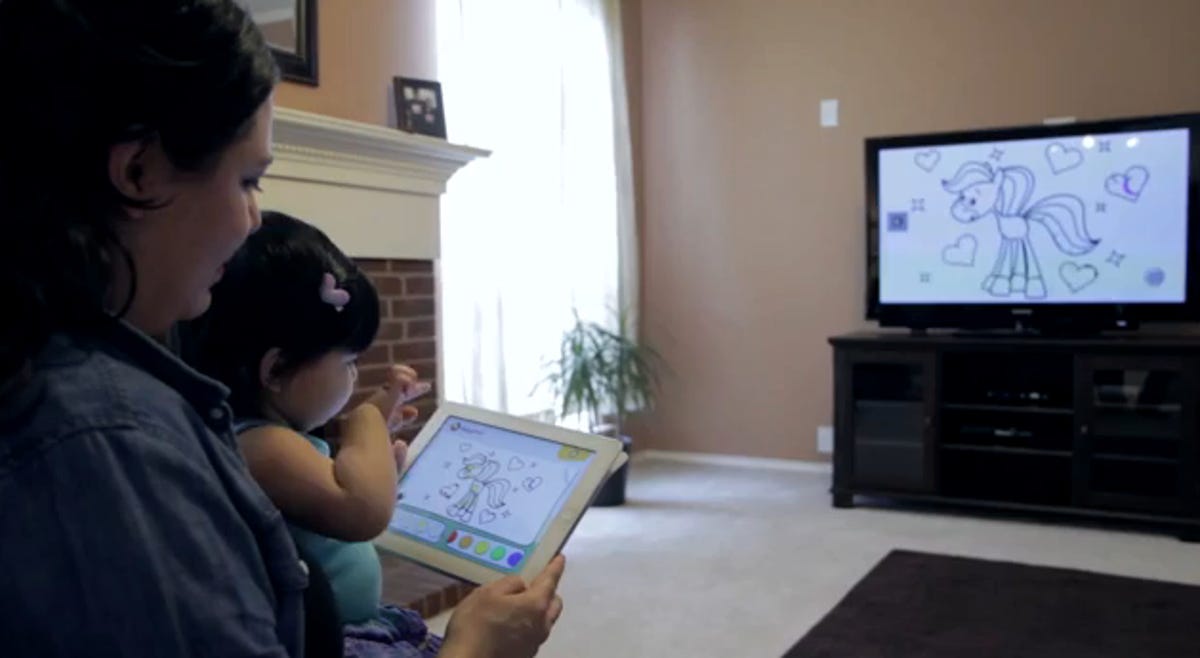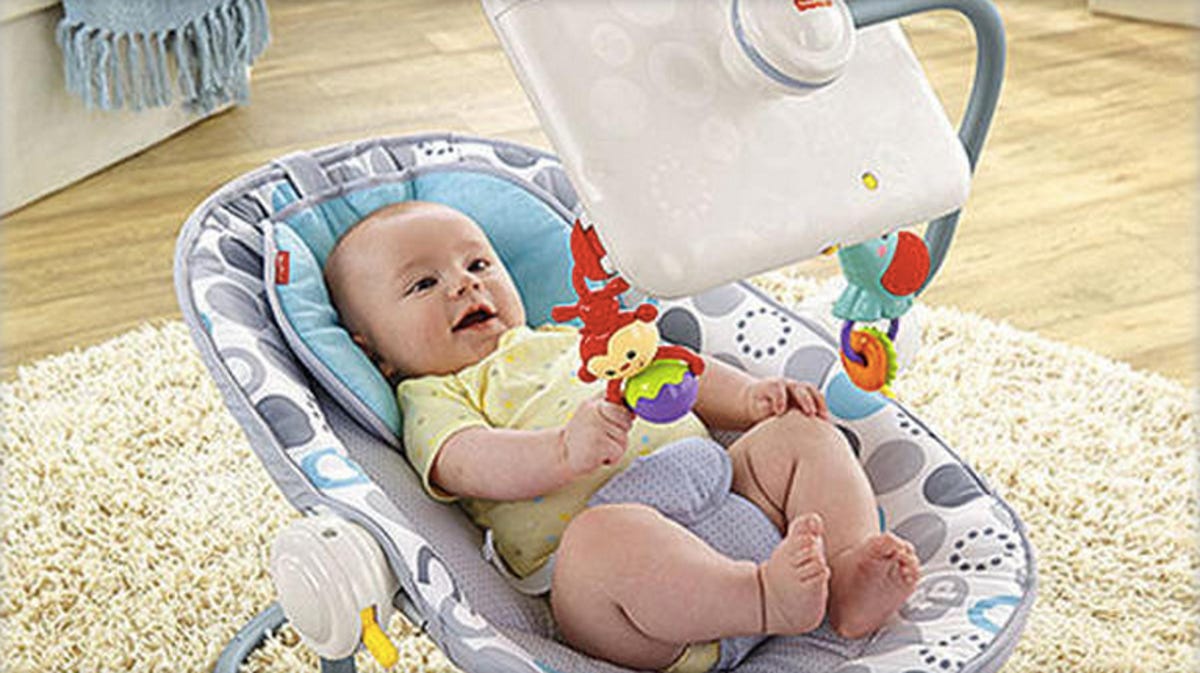
AT&T
As if one screen for a baby wasn’t enough, AT&T is launching a so-called educational app for its U-verse TV service that promotes a “second screen” experience for toddlers.
The new app developed in partnership with BabyFirst allows babies to create images on an iPhone or iPad and then have the images appear on big TV screens that are tuned to the BabyFirst channel on the U-verse TV service.
AT&T claims the app is educational by allowing babies to create pictures using various animals, shapes, and colors. It also claims it helps improve hand eye-coordination. And in its press release it boasts that it was created by child development experts and tested by “a discerning clientele: babies and toddlers.”
But I’m one parent who isn’t buying these claims.
I have no doubt that babies are intrigued by the colors and images they see on the iPad and may giggle and laugh when they see those images transferred to the big TV screen. But given that my 8-month-old daughter is practically hypnotized by our ceiling fan and the bright sunlight streaming through our slatted blinds on a sunny afternoon, my guess is that her entire demographic is actually not that discerning when it comes to what will grab their attention.
So I’m just a tad skeptical about AT&T’s claims of “professional” testing by toddlers and babies. I’m even more skeptical that this app has any true educational benefits or is even developmentally appropriate for children so young.
Perhaps I’m being overly harsh in my criticism. But as both a parent and a technology journalist it frustrates me to see so many companies promoting apps, gadgets, and other multimedia technology that profess to be “educational” for infants and toddlers when the American Academy of Pediatrics clearly recommends that children under two years of age should not have any screen time at all. And yes, that includes tablets and smartphones.
“Television and other entertainment media should be avoided for infants and children under age 2,” according to the guidelines set by the American Academy of Pediatrics. “A child’s brain develops rapidly during these first years, and young children learn best by interacting with people, not screens.”
I’ll acknowledge that little research has been done so far on the effects of babies using interactive games and apps on smartphones and tablets under two years old. And I’ll also acknowledge that for older children such interactive apps can be useful in facilitating learning, especially when children and adults are using them together. But even then, screen time of any kind should be limited.
Still, there’s been plenty of research done that shows the effects that television viewing have on young babies. And it’s not pretty.
Not only does the research indicate there are no real educational benefits for babies watching videos, such as Baby Einstein, which are also marketed as educational, but some research indicates that television viewing can have negative effects on language development, reading skills, and short-term memory. It can also contribute to problems with sleep and attention, according to David L. Hill, MD, who highlights why it’s important for parents to avoid screen time for children younger than 2 years of age in an article written for the website HealthyChildren.org.
Of course, AT&T and BabyFirst, which operates a TV channel available on other paid TV services, such as Comcast, DirecTV, and Dish, are not the only companies targeting apps or media for tiny tots against the recommendations of developmental experts. Even once-respected educational toy companies, like Fisher-Price, have built products specifically for young babies that are geared toward satisfying demand for multimedia and touch screens.


Fisher-Price
Late last year, Fisher-Price was criticized for introducing a bouncy-seat with an iPad holder, which would expose even newborns to multimedia. The toy company –along with several other companies– also makes baby-proof cases for mobile devices like iPhones and iPads that are specifically designed to ruggedize parents’ mobile devices so they can be handed off to the unsteady hands of a toddler or baby.
The reason these companies are targeting this demographic is simple: there’s huge demand for it. A 2013 study by Common Sense Media, a nonprofit child advocacy group, found that nearly 40 percent of children under two years of age have used a mobile device. This is a fourfold increase in usage of smartphones by tykes in 2011.
I know I’m still relatively new to this parenting thing. After all, my daughter is only eight months old. And I am well aware there will come a day when I too may want to have a quiet dinner in a restaurant with my husband, and I’ll load an app on my smartphone or tablet and hand it to my daughter to keep her temporarily entertained. I’m also quite sure she’ll eat junk food occasionally, drink a few sugary drinks, or stay up way past her bedtime from time to time.
My only request is that the companies designing and promoting these so-called educational apps would be honest in their marketing. These apps are no more educational than if Coca-Cola fortified their soft drinks with vitamin C and calcium and called them health foods. And truthfully almost any bright, shiny, colorful item will capture a young baby’s attention just as much as any app running on a tablet or big screen TV.
Let’s call these apps and other multimedia what they are: electronic babysitters. And if parents are all right with the notion that they’re feeding their kids a little multimedia junk food every once in a while, then so be it. But don’t pretend that my baby would have more fun or will somehow learn more designing a picture on a tablet than she would banging a couple of pots and pans together sitting on the kitchen floor while I cook dinner.




